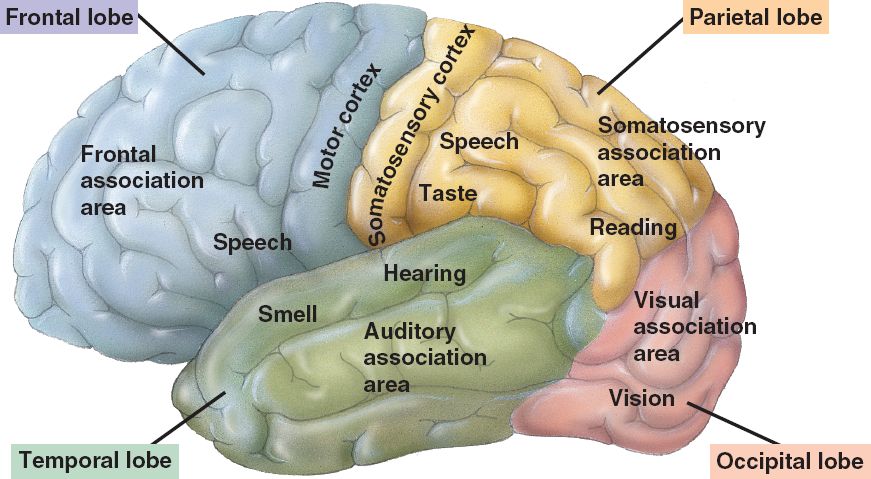 |
| Cerebrum |
The gray matter covers an underlying mass of fibers called the white matter. the convolutions are made up of ridgelike bulges, known as gyri, separated by small grooves called sulci and larger grooves called fissures. Approximately two-thirds of the cortical surface is hidden in the folds of the sulci. The extensive convolutions enable a very large surface area of brain cortex-about 1.5m2 (16ft2)in an adult-to fit within the cranium. The pattern of these convolutions is similar, although not identical, in all humans
Head injury can initiate a cascade of damaging events. After a blow to the head, a person may be stunned or may become unconscious for a moment. This injury, called a concussion, usually leaves no permanent damage. If the blow is more severe and hemorrhage (excessive bleeding) and swelling occur, however, severe headache, dizziness, paralysis, a convulsion, or temporary blindness may result, depending on the area of the brain affected. Damage to the cerebrum can also result in profound personality changes.
The cerebrum and cerebellum of higher mammals are highly convoluted in order to fit the most gray matter surface within the confines of the cranium. Such highly convoluted brains are called gyrencephalic. Many lower mammals have a smooth, or lissencephalic (“smooth head”), cortical surface.
WHAT DOES THE CEREBRUM DO?
Your cerebrum makes up most of your brain. Your cerebrum solves problems and makes wishes. All of your thinking goes on in your cerebrum. Speech, language, and emotions come from your cerebrum, especially your cerebral cortex. The cerebral cortex is the outer part of the cerebrum.
Your cerebrum also gets signals from your senses. Nerves carry the signals. Nerves from your eyes and ears go to parts of the cerebrum that let you see and hear. Nerves carry signals to your cerebrum that let you feel, smell, and taste.
Your cerebrum sends messages out along nerves. The messages tell your legs to walk or run. They tell your arm and hand to wave when you see a friend across the street.
don't forget to comment and follow me ! thank's
GO GREEN !!!




0 komentar:
Post a Comment